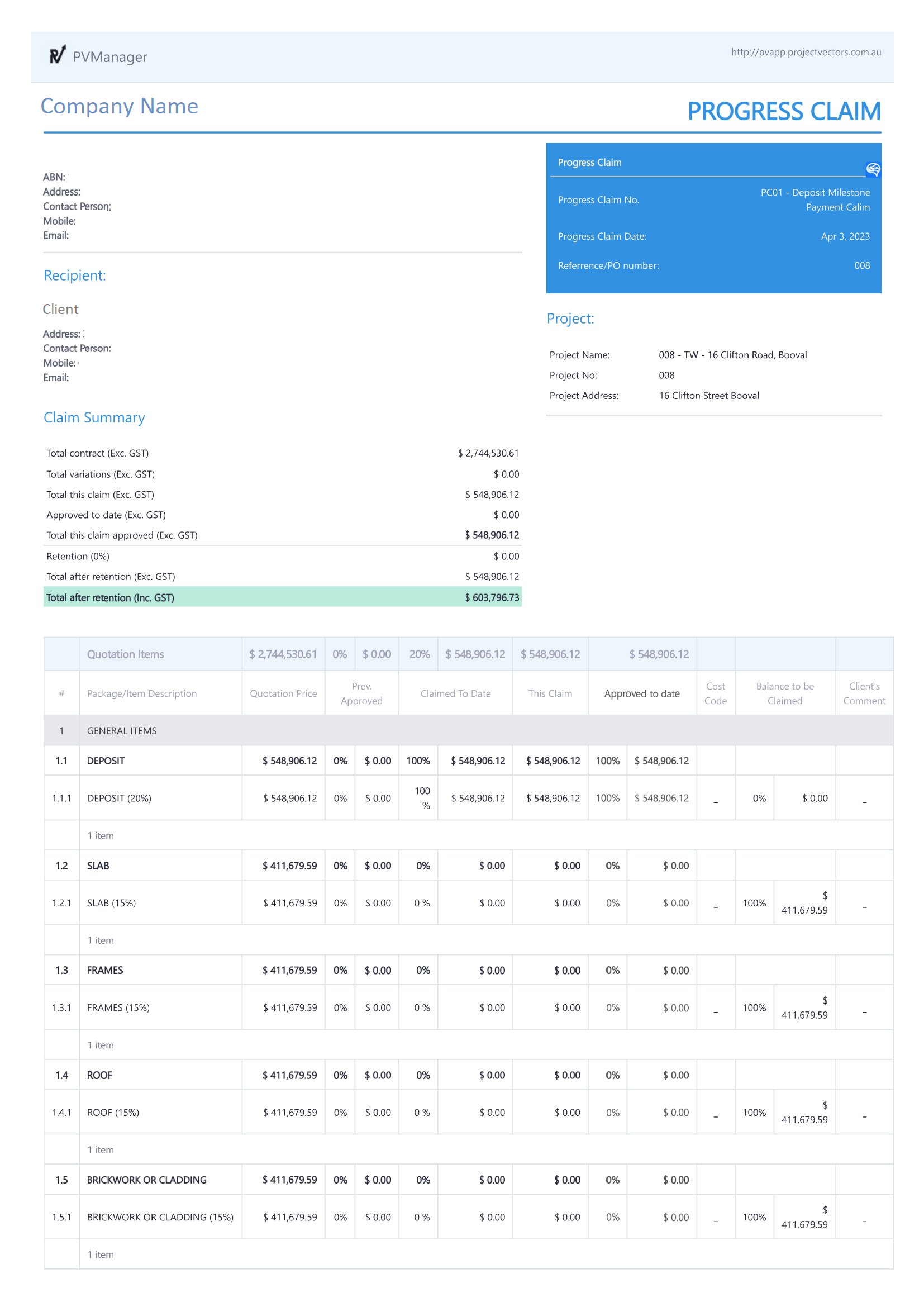
Progress Claims in Construction: Embracing the Digital Era
Project Vectors
20 Jun 2023
In the Australian construction industry, progress claims serve as a lifeline for cash flow and project sustainability. They represent a structured request for payment for work completed or goods delivered on a construction project. However, preparing, submitting, managing, and reconciling these claims can often become an administrative nightmare, potentially impacting productivity and profit. Let’s dive deeper into what progress claims are and how digital platforms are revolutionizing the process.
What is a Progress Claim?
In essence, a progress claim is an invoice a contractor or subcontractor sends to a client for a portion of the work completed in a specific period. This period and the amount of work accomplished are predefined in the construction contract. These claims are particularly relevant in large projects where work takes place over an extended period, making it impractical for the contractor to wait for completion before receiving payment.

Legislation and Regulations
Progress claims are governed by the Building and Construction Industry Security of Payment Act (SOPA). This legislation, enacted by various Australian states and territories, provides a framework to ensure prompt payments and resolve payment disputes. It stipulates strict timelines for making and responding to progress claims, and any disputes are to be resolved through an adjudication process.
Contractors need to keep up-to-date with the latest amendments and interpretations of this legislation across different jurisdictions. Failure to adhere to these rules can result in payment delays or even legal penalties. Therefore, a deep understanding of this legislation is crucial for any contractor to stay compliant and ensure their progress claims are enforceable.
Traditional Process of Creating and Submitting a Progress Claim
Typically, creating a progress claim involves the following steps:
- Identification of the Work Completed: The contractor needs to determine what portion of the work they’ve completed according to the contract’s schedule of rates or bill of quantities.
- Value Assessment: Once the progress percentage of work is known, it’s multiplied by the amount agreed upon in the contract to get the value of the claim.
- Progress Claim Preparation: This involves filling out the claim form, which includes details about the project, claimed amount, description of work done, and relevant dates.
- Submission: Once the claim is ready, it’s submitted to the client for approval and payment.
This process can be time-consuming, prone to human errors, and challenging to manage for multiple contracts. It can also lead to delays in payment due to inaccuracies or incomplete information in the claim.
How Digital Platforms Can Help
By leveraging digital platforms, construction businesses can streamline the process of creating and submitting progress claims. Digital solutions automate the majority of the manual work, from filling out forms to calculating the value of work done.
Here’s how it works:
- Automated Data Population: By linking the digital platform to the project management system, data about the work done can be automatically populated into the claim form. This eliminates manual data entry and reduces the likelihood of errors.
- Automated Calculations: The platform can automatically calculate the value of the claim based on the contract rates and the work done.
- Easy Submission: Once the claim is ready, it can be submitted directly from the platform to the client, further streamifying the process.
A prime example of such a platform is “PVManager” which offers an integrated solution to generate, manage, and track progress claims. It automatically populates the progress claim form with the data from the project management system, calculates the claim’s value, and facilitates the submission to the client.

Integrating Progress Claims into Accounting Systems
Once a progress claim is assessed, it needs to be integrated into the accounting system for bookkeeping and financial management purposes. Traditionally, this involves manually inputting the approved claim data into the accounting system – a process that is again time-consuming and prone to errors.
However, a digital platform can seamlessly integrate with the accounting system to automate this process. For example, “PVManager” can link with popular accounting software like Xero, automatically updating the accounting records once a progress claim is approved. This ensures accurate and up-to-date financial records, facilitating better financial management and decision-making.
Conclusion
In an era of digital transformation, embracing technology is no longer an option but a necessity for construction businesses. Leveraging digital platforms for managing progress claims not only streamlines the process but also ensures compliance with legislation, improves accuracy, and enhances financial management. As the Australian construction industry continues to evolve, businesses that harness the power of digital platforms are likely to stay ahead of the curve, ensuring profitability and growth.
Read more about PVManager: Construction Project Management Software Australia – PVManager | Project Vectors
Also read about Retention Money: All About Retention Money in Australia (projectvectors.com.au)



